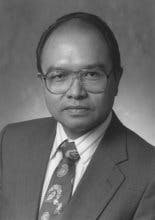Pediatric Infant Bilateral Open Inguinal Hernia Repair - Twin A
Transcription
CHAPTER 1
[No dialogue.]
CHAPTER 2
Hemostat. Is that the ovary? Yes, that's the ovary. Maybe not. This is part of the sac. This is the hernia sac of the baby. Forceps? Yeah, it's a big one, that's why the ovary came out. There's the ovary right there. So what I'm doing is I'm going to- see, there's the head of it. So, we're gonna tuck this in, we're going to ligate the- see, there's the fallopian Tube. This is the fallopian tube right here. The ovary. So, we're going to put the stitch right there. No, we can see without the light. Okay, now we're going to put a purse string around the base. Okay, now- we're going to tuck this in, can i have a forceps? See this, see what I just did? Okay, now you're going to first push this in and then tie that purse string. We're going to tie the purse string, see? See, that will prevent all the problem. Instead of, instead of doing a- you know, a dissection and all that, see? See how that is? Have you seen that technique before? No sir. Have you ever see that? No sir. No, that's mine. Okay, so that's why I haven't seen it. That's my technique, and you can have it, you can own it. Just put me in a- just put me in a footnote. I'm going to put you in. Okay, when you start doing this procedure and you make a paper, because this procedure has never been described. So you have to describe it and just put me in the footnote. My attendings were making small incisions, so I said, well... are they doing? How can you, how can you do this operation in small incision and then when I learned the philosophy and principles of it, I made my incisions even smaller. And then my attendings were making big incisions, bigger incisions than mine, so... So, my attendings got mad at me. So, my chapter one is incisions. Yes, correct. See, you think you can- look at this needle I have here, and if you don't know how to use it through a small incision, you'll be fumbling around like crazy. You'll be sewing up everything that you see in sight, but you see how big this needle is compared to the incision, but you've got to know how to use it. You have to know where- strategically, where the needle is going to be, to the- to the needle holder and all that. So all- it's all strategic. Yeah. And I have to be careful because this needle holder is- is also a scissors, so it's a mean- it's a mean needle holder. Yeah. Because if I'm not paying attention, I cut the suture in the middle of the procedure. Okay. Okay, let's go ahead and close the hole away, while we- before we do the other side.
CHAPTER 3
See what I did, I just did is I just used the needle holder as a retractor by putting it here strategically. Like so, and then you can- at the same time make a move to, to go ahead and go through whatever tissue you want to put together. All in one swoop. And 4-0 Monocryl is next. You catch the edge of the wound and you go down and you walk deep and you come out to the surface, just like that, same level as you went in. And then you can tie this in here. The whole concept is just approximate the wound.
CHAPTER 4
[No dialogue.]
CHAPTER 5
Yes, this is Scarpa's. You're there. Yeah, expose the external oblique. Yes, that's them. Yes, there's the sac. Yeah, pull it up, then push that- another clamp. Where's the nerve, the nerve is- it's not there, push the nerve away, there's the nerve. Yeah. Cauterize that one. Okay, all right, just suture ligature the sac and you're done, you don't have to do- the maneuver I showed you, just put a high ligation there, at the bottom. Okay? That's it. Suture, 3-0 Vicryl. Yeah, go ahead. Okay, we're going to close. That one. Yes, that's the one. You didn't get the other side yet. You're going to come up, come out. Okay, there. Yeah, you got it this time. This should be it.
CHAPTER 6
Okay, Monocryl? Whichever way. March all- go all the way. Because then they'll see two different kinds of closure.


